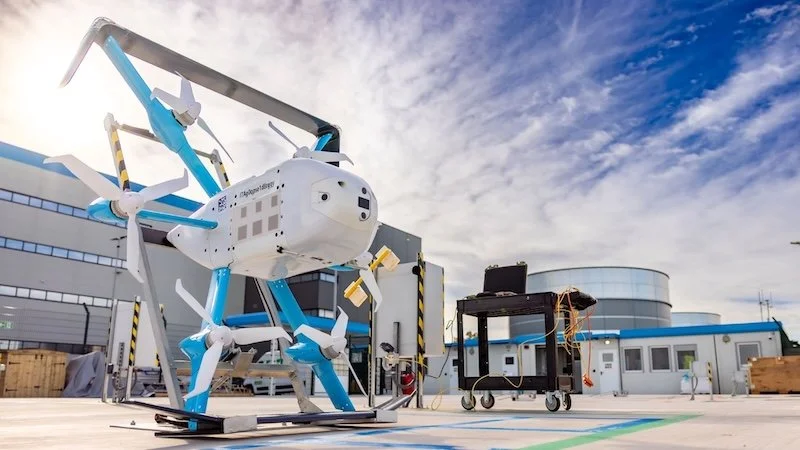The ultimate guide to data centre liquid cooling
Data centres play an important role in ensuring secure storage and connectivity to support an organization's online services. Considering the large number of servers and resources they house within them, data centres generate a significant amount of heat every day.
If this heat is not managed properly through an effective cooling system, it's likely for the servers and IT equipment to break down, get damaged, and cause costly downtime.
As a result, comprehensive cooling systems are needed to help keep down the heat and maintain the ideal operating environmental conditions for the IT equipment. This is where data center liquid cooling comes in.
This article will provide an in-depth review of what data centre cooling is, the benefits of data centre cooling, and recent trends in liquid cooling.
What is data centre liquid cooling?
Data center liquid cooling is a cooling technology involving the use of liquid, typically water or a specialised dielectric fluid.
The technology manages the heat generated by electronic components within a data centre. This method contrasts with traditional air cooling, where air is used to remove heat from IT equipment and other components.
Liquid cooling has become increasingly popular since it offers a higher heat transfer efficiency than traditional air cooling. It can absorb and carry away heat more efficiently, allowing for more effective cooling of electronic components.
Types of data centre liquid cooling
The two primary methods of data centre liquid cooling are direct-to-chip liquid cooling and immersion cooling.
Direct-to-Chip Liquid Cooling
In this method, liquid cooling components, such as cold plates or liquid cooled heat sinks, come into direct contact with the heat-producing components, such as processors (CPUs) and graphics processing units (GPUs).
The liquid absorbs the heat directly from the chips, and a closed-loop system circulates the heated liquid away from the components to a heat exchanger. The heat exchanger then dissipates the heat into the environment using water or an external cooling system.
Immersive Liquid Cooling
In immersive liquid cooling, the entire server or rack of servers is submerged in a pool of non-conductive liquid coolant. The heat from the components is transferred to the liquid, which then circulates through a heat exchanger, where it is cooled down.
Unlike traditional air cooling methods, immersion allows the liquid to make direct contact with all electronic components. This method eliminates the need for air circulation and facilitates better heat dissipation.
The benefits of data centre liquid cooling
Liquid cooling offers several benefits that make it a great option for managing heat in modern data centres. These benefits include:
Improved Performance and Reliability
One of the main advantages of data centre liquid cooling lies in its ability to significantly enhance the performance and reliability of electronic components.
By facilitating direct contact between the cooling medium (often water or specialised dielectric fluids) and heat-generating chips, liquid cooling ensures optimal operating temperatures.
This cooling effect not only safeguards against thermal related performance degradation but also extends the lifespan of important IT equipment and components. The final result is a more powerful and reliable data center ecosystem, with electronic systems operating at peak efficiency.
Enhanced Energy Efficiency
Data centre liquid cooling systems often lead to a significant reduction in energy consumption, resulting in operational cost savings and environmental sustainability.
Liquid cooling approaches minimise the need for mechanical fans, which traditionally account for a significant portion of energy use in air-cooled data centres.
Thanks to liquid cooling technology's precision in temperature control, the available energy in the data centre is only spent where necessary. This translates to a more energy efficient and cost-effective data centre operation.
Sustainability in Action
Generally, organisations are free to choose the type of coolant they want to use in their data centre liquid cooling systems.
This provides an avenue for organisations to embrace sustainability initiatives. By using environmentally friendly and non-conductive fluids in their liquid cooling systems, organisations are able to minimise the overall environmental impact of cooling operations.
Additionally, the closed loop nature of most data centre liquid cooling systems reduces the risk of fluid leakage. This further helps organisations realise their long-term sustainability goals.
Heat Reuse
Liquid cooling opens up the possibility of data centres repurposing the excess heat they generate during the cooling process for different eco-friendly initiatives.
For example, organisations can reuse the heated fluid as a heat source in building heating systems or for other applications like heating nearby office spaces.
Maximising Data Centre Space
The efficient heat dissipation provided by data centre liquid cooling systems allows for higher hardware density within the same physical space.
By minimising the amount of space/room required for cooling operations, organisations can easily optimise their data centre layout and make the most of the available space.
Such a high level of efficiency helps ensure data centre scalability and flexibility without compromising performance. This is particularly important in this era where data centres are rapidly growing and evolving to accommodate increasing needs.
Recent trends in data centre liquid cooling technology
Here are some of the latest trends to watch out for in data centre liquid cooling:
Increased Adoption Immersion Cooling
Some years ago, data centres relied on room air to help keep IT equipment and devices cool.
However, this method was not efficient. Recent years have seen a significant increase in the adoption of immersion cooling in data centres. With this method, servers and server components are submerged in a non-conductive coolant to cool.
This method is becoming increasingly popular due to its exceptional heat transfer capabilities which make it ideal for high-performance computing (HPC) and AI systems.
Advanced Cooling Fluids
Researchers around the world are working tirelessly every day to develop more efficient and sustainable cooling fluids for data centre liquid cooling.
Although deionised water and dielectric fluids still remain the most prevalent options, researchers are exploring other advanced cooling fluids with better thermal properties and less environmental impact.
Some of these advanced cooling fluids include graphene-based nanofluids, phase-change materials (PCMs), ionic liquids, and bio-based coolants.
Unleash the power of liquid cooling
Data center liquid cooling is not only a cooling solution but also a strategic investment in the future of data centre operations. Thanks to its many benefits, you cannot underestimate the importance of data center liquid cooling in the evolving landscape of information technology.
As data centres continue to face increasing demand for their services, adopting liquid cooling is a great step towards achieving operational efficiency and sustainability in the face of technological evolution.
















Continue reading…